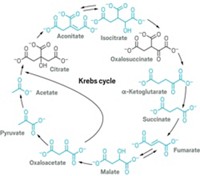Advertisement
Grab your lab coat. Let's get started
Welcome!
Welcome!
Create an account below to get 6 C&EN articles per month, receive newsletters and more - all free.
It seems this is your first time logging in online. Please enter the following information to continue.
As an ACS member you automatically get access to this site. All we need is few more details to create your reading experience.
Not you? Sign in with a different account.
Not you? Sign in with a different account.
ERROR 1
ERROR 1
ERROR 2
ERROR 2
ERROR 2
ERROR 2
ERROR 2
Password and Confirm password must match.
If you have an ACS member number, please enter it here so we can link this account to your membership. (optional)
ERROR 2
ACS values your privacy. By submitting your information, you are gaining access to C&EN and subscribing to our weekly newsletter. We use the information you provide to make your reading experience better, and we will never sell your data to third party members.
Synthesis
Adenine from outer space
August 6, 2007
| A version of this story appeared in
Volume 85, Issue 32

A major goal of origin-of-life studies is to determine potential mechanisms for the prebiotic synthesis of nucleic acid bases, such as adenine. Possible adenine precursors are known to exist in space, and adenine has been observed in asteroids and comets. Rainer Glaser of the University of Missouri, Columbia, and coworkers now have used a theoretical model of gas-phase chemistry to predict mechanisms for adenine production in space (Astrobiology 2007, 7, 455). The most likely pathway is a four-step cyclization of the precursor aminoimidazolecarbonitrile (shown, left) to adenine (right). The key reaction step requires no catalyst, has essentially no activation barrier, and is irreversible. The mechanism implies that "it's adenine's destiny to accumulate," Glaser says. "This might explain why it eventually became a central molecule in life processes." If adenine formation occurs throughout space, "life everywhere might have started out pretty much the same way," he adds.





Join the conversation
Contact the reporter
Submit a Letter to the Editor for publication
Engage with us on Twitter